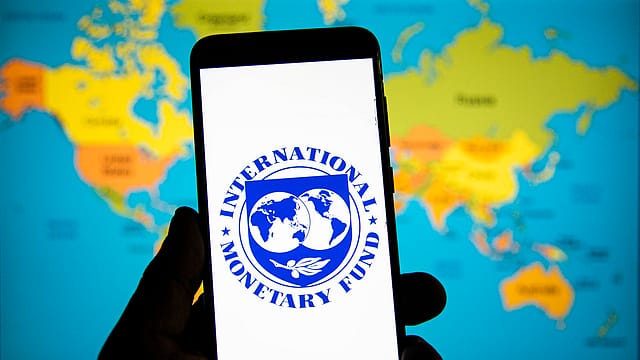IMF retains India’s GDP forecast for FY26, FY27 amid global slowdown
ADVERTISEMENT

The International Monetary Fund (IMF), in its January 2025 World Economic Outlook (WEO) Update, has projected that India's economy will grow at 6.5% each in 2025-26 and 2026-27, as projected in its October 2024 forecast and in line with potential. With this, India will remain the fastest-growing economy, and based on the calendar year, the IMF sees India's economy growing at 6.8% in 2025 and 6.5% in 2026.
The IMF in its previous (October 2024) update had retained India's GDP growth forecast at 7% for 2024-25 and 6.5% for 2025-26, citing exhaustion of pent-up demand accumulated during the COVID-19 pandemic.
The IMF has termed the economic growth projections for India as "solid" at a time when global growth is projected at 3.3% both in 2025 and 2026, below the historical (2000–19) average of 3.7%. The IMF's forecast for 2025 is broadly unchanged from that in the October 2024 World Economic Outlook (WEO), primarily on account of an upward revision in the United States, which offset the downward revisions in other major economies.
On headline inflation globally, the IMF projects a decline to 4.2% in 2025 and 3.5% in 2026, converging back to the target earlier in advanced economies than in emerging markets and developing economies.
January 2026
Netflix, which has been in India for a decade, has successfully struck a balance between high-class premium content and pricing that attracts a range of customers. Find out how the U.S. streaming giant evolved in India, plus an exclusive interview with CEO Ted Sarandos. Also read about the Best Investments for 2026, and how rising growth and easing inflation will come in handy for finance minister Nirmala Sitharaman as she prepares Budget 2026.
The IMF says the global economy is holding steady, but the global GDP growth in the third quarter of 2024 was 0.1 percentage points below that predicted in the October 2024 WEO, after disappointing data releases in some Asian and European economies.
"Growth in China, at 4.7% in year-over-year terms, was below expectations. Growth in India also slowed more than expected, led by a sharper-than-expected deceleration in industrial activity. Growth continued to be subdued in the euro area (with Germany’s performance lagging that of other euro area countries), largely reflecting continued weakness in manufacturing and goods exports. In Japan, output contracted mildly owing to temporary supply disruptions."
The IMF data, however, shows the momentum in the United States remained robust in the third quarter, with the economy expanding at a rate of 2.7% YoY on strong consumption.
With respect to the projection in October, growth in 2025 for China is marginally revised upward by 0.1 percentage point to 4.6%. The revision, says the IMF, reflects carryover from 2024 and the fiscal package announced in November largely offsetting the negative effect on investment from heightened trade policy uncertainty and property market drag. "In 2026, growth (in China) is projected mostly to remain stable at 4.5%, as the effects of trade policy uncertainty dissipate and the retirement age increase slows down the decline in the labour supply."
In the medium term, IMF says the balance of risks to the outlook is tilted to the downside, with global growth poised to be lower than its 2025-26 average and five-year-ahead forecasts at about 3%. "Near-term risks, in contrast, could reinforce divergences across countries: they are tilted to the upside in the United States, whereas downside risks prevail in most other economies amid elevated policy uncertainty and headwinds from ongoing adjustments (in particular, energy in Europe and real estate in China)."
Against the backdrop of elevated uncertainty, policies need to rein in short-term risks, says the IMF, and rebuild buffers while pushing ahead efforts to lift medium-term growth prospects. "Monetary policy should ensure that price stability is restored while supporting activity and employment. In economies in which inflationary pressures are proving persistent and the risk of upside surprises is on the rise, a restrictive stance will need to be maintained until evidence is clearer that the underlying inflation is sustainably returning to target."
